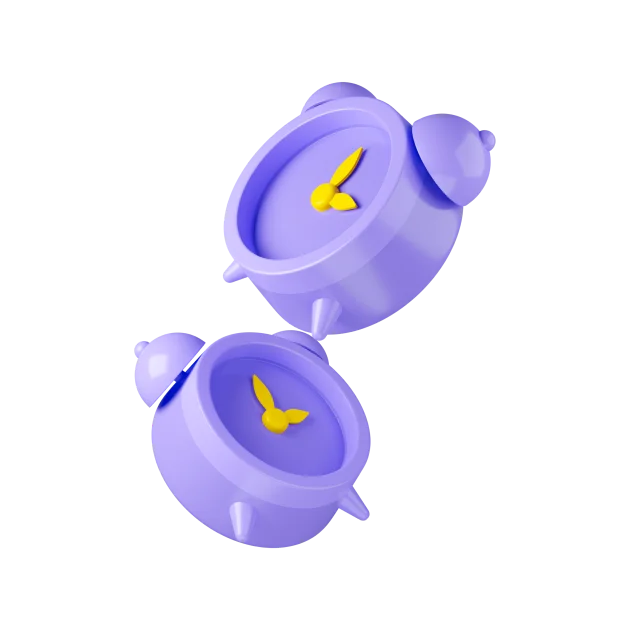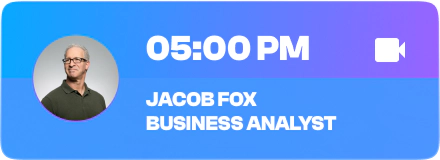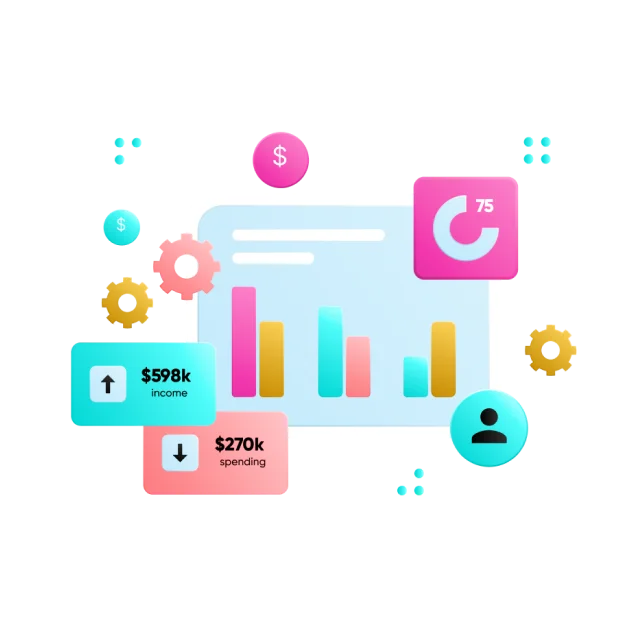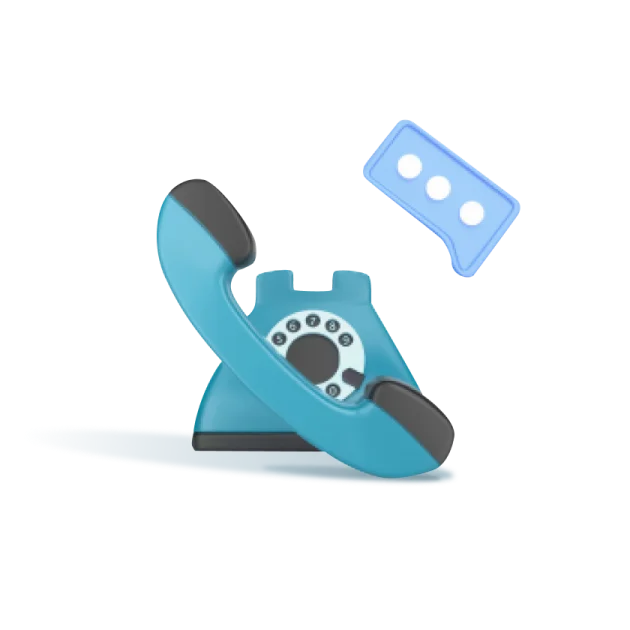Let’s talk about the optimal times to send marketing emails. You know, it can really make a huge difference in the success of your campaigns!
Have you noticed how opinions can vary so much? Some marketers say that Monday is the perfect day to set a rhythm. But then again, who among us hasn’t felt overwhelmed at the beginning of the week? On the contrary, others recommend the weekend, positing that individuals may be more relaxed and open to reading emails at that time.
However, the best time to send emails depends on several factors, with your target audience playing a key role. For example, if your subscribers work in the office, Monday may not be the best choice. Perhaps a more strategic approach would be to study the precise time when they open emails?
WHAT IS THE BEST TIME TO SEND SALES EMAILS?
Have you ever wondered why some emails are read right away, while others are ignored? It’s not just about the content, but also about the time you send them! Choosing the perfect moment is not easy, because there are so many nuances: who your recipients are, the subject matter of the email, the frequency of your communication, and even the type of device through which they are accessed.
Let’s talk about the key factors and analyze each day of the week so you can pinpoint the most advantageous timing to send emails for your target audience.
FACTORS AFFECTING THE BEST TIME TO SEND SALES EMAILS
Industry
In which sector do you operate? This is important! For example, if you have a B2B company, it is advisable to send your emails during weekdays in the morning, when people are starting their working day. However, a B2C clientele may be more active in the evening or on weekends – when they have free time.
Email content
What is your content? Marketing emails, promotions, newsletters – they all work differently. For example, promotional emails may be more effective in the morning when people are not yet overwhelmed with information, while transactional emails (like order confirmations) are usually opened promptly, regardless of the time they are sent.
Sending frequency
How often do you correspond with your subscribers? If you send emails too often, people may simply get tired and unsubscribe. To avoid this, it is better to distribute your emails throughout the week and not overload your audience.
Target audience
Who are you sending emails to? The factor plays a crucial role in determining their email-checking habits. Younger people tend to check their emails on their phones during the day, while older people may prefer to do so in the morning or evening while sitting at their computers.
Devices
Consider the medium through which your audience accesses their emails. If your audience primarily uses smartphones, they are likely to open their emails while on the go – for example, on their way to work. However, desktop users are more likely to read emails during work hours.
WHEN ARE THE BEST DAYS TO SEND EMAILS?
Monday is the day for marketing emails
Monday is commonly referred to as a “lazy day” characterized by a gradual transition into the work rhythm. But here’s the interesting thing: SurveyMonkey research indicates that emails sent on Monday boast a 10% higher open rate compared to other days of the week. Therefore we can say that the best time to send emails on Monday. Why? Perhaps people check their email while drinking their morning coffee, getting ready for the week and being receptive to new information. So if you aim to attract attention to your marketing email, Monday can be a strategic choice!
Tuesday is the best day for engagement
Tuesday is the day when the work rhythm has already gained momentum. According to Unisender, mailings show some of the best results on this day. However, there is a nuance: the competition is growing, because many marketers know the best time to send email on Tuesday, particularly for email campaigns. To stand out, focus on high-quality content and a catchy headline. By the way, if your audience is busy on Monday sorting out their backlog of tasks, then Tuesday will give them more time to read your emails.
Wednesday is the golden mean
The middle of the week is a great time to get on your audience’s radar. A study by Harland Clarke Digital, which analyzed 1 billion emails, showed that Wednesday is almost as effective as Tuesday, with an open rate of 20.6%. This is the best time to send mass email, particularly advantageous for promoting enticing offers or reminding subscribers about yourself.
Thursday is the worst time to send email? Not always!
It is generally accepted that the best time to send email is Thursday, but today, with the increasing volume of mailings on this day, many emails simply get lost in inboxes. However, this does not mean that Thursday is always a poor choice. If your audience is used to receiving important updates at the end of the week, this day still can be effective. The main thing is to test!
Best time to send email campaign on Friday for special offers and promotions
Do you know what day is optimal for promotional emails? Friday! Especially if you have a B2C business. When people are preparing for the weekend, they exhibit a higher tendency to engage with emails with promotions and special offers. If you have, for example, a store or service with great discounts, the best time to send email on Friday will help attract the audience’s attention.
And what about the weekend? Is it worth sending emails?
The weekend is a controversial time for mailings. Do people read emails on Saturday? On one hand, many are just relaxing and avoid checking work-related emails. On the other hand, research shows that B2B specialists frequently review emails over the weekend to prepare themselves for the upcoming week. If you have educational content, a selection of articles or useful tips, the weekend can be an opportune moment to convey them to your subscribers.
IDEAL MOMENTS OF DAY TO SEND EMAILS
Morning emails: beneficial or a potential oversight?
Many people start their day by checking their email. That’s a plus! But here’s the thing: during the morning hours, often inboxes is literally clogged with messages, leading to possibility of your email getting lost among the crowd.
On the other hand, if you have important information, such as breaking news or a limited-time offer, morning emails can be bingo. The key is to make it immediately attention-grabbing. For example, use a catchy subject line or a personalized appeal.
Lunchtime: a moment of respite
What about lunchtime? People relax, scroll through social media, and check their emails. Research shows that emails sent at this time often receive higher responses. If you are sending a marketing email or useful content, try scheduling them around 12-2 pm.
Example: envision your subscriber seated in a cafe, drinking coffee and scrolling through their mailbox. If your email is interesting and unobtrusive, it is more likely to be read rather than in the morning rush.
Evening: time for thoughtful reading
After work, many people check their emails without rushing – before bedtime or during rest. This period is particularly suitable for content that requires attention: articles, collections, company news. Evening emails can work especially well for a B2C audience that is relaxed and ready to perceive information.
OPTIMIZE YOUR EMAILS: BEST PRACTICES
A/B testing: the magic button for success
Experiment with sending emails at different times and compare the results. What are the best days to send emails, when is the open rate peak? When are there more clicks on links? This is A/B testing – a method that helps you understand exactly when your audience is most active. By gradually adjusting the sending time, you can find the ideal moment for the mailing.
What factors to consider when testing:
- The activity patterns of your audience. People read their email at different times. Some check it in the morning over a cup of coffee, while others do it in the evening before going to bed. Tools like Google Analytics can help in identifying peak traffic times on your site, which can inform time to send your emails.
- Insights from previous campaigns. If you’ve already sent emails, don’t forget to look at your statistics. Which days were the open rates higher? When were there more clicks? These data are your clues.
- Consider your subscribers’ time zones. If you have clients from different countries, it’s important to take their local time into account. Schedule your emails so that each recipient receives the email at a time that’s convenient for them.
- Your content. Not all emails work the same. It’s better to send promotions on days when people are ready to buy – for example, the best time to send email is Friday before the weekend. News and articles may be more in demand in the middle of the week, and transactional emails (order confirmations, invoices) should be sent right away, regardless of the day and time.
DETAILED BREAKDOWN: BEST DAYS TO SEND EMAILS OF DIFFERENT TYPES
Sales emails: when are people ready to buy?
If you want your sales emails to work, send them on Tuesday, Wednesday, or Thursday. Why? This timing is strategic, as people have already sorted out the beginning of the work week and are ready to absorb new information.
What is the best time to send sales emails during the day? This is mid-morning (10-11 am) or late in the workday (4-5 p.m.). During these hours, people have either sorted out their morning chores or are finishing up work and are ready for a little distraction.
B2B emails: communicating with professionals
If your business works with other companies (B2B), it is important to adjust to working hours. What is the best time to send emails on Tuesday and Wednesday? – morning. There are too many tasks on Monday, and on Friday, thoughts are already about the weekend.
In the first half of the week, people are generally at the peak of productivity, increasing the likelihood that they will not only open your letter, but also engage with its content thoroughly.
Promotional emails: drawing attention to offers
When is the best time to send emails with promo codes, discounts and special offers? Typically, the ideal window is midweek, particularly around midday, when people have some free time to contemplate potential purchases.
But certain days should be avoided. On Monday mornings, everyone is sorting out accumulated matters, while on Fridays often find them mentally planning the weekend. If you do not want your letter to get lost, steer clear of these days.
Bulk mailings: how not to end up in “spam”?
When sending an email to a large audience, it’s crucial to choose a time when people actually have time to read. The most favourable option is Tuesday, Wednesday, or Thursday morning (9-11 am).
Why is Tuesday the best day to send emails? During this period, most people check their emails while not yet overwhelmed with tasks. This means that there is a higher chance that your email will not go unnoticed.
News and updates: when are people interested in reading?
If you have a newsletter, try to send it in the middle of the week, ideally on Tuesday or Thursday morning. This is the time when people are ready to consume content and acquire new information.
But the end of the week is not the best time. On Thursday and Friday, many are experiencing fatigue, and on the weekends, email engagement tends to decline significantly.
BEST TIME TO SEND SALES EMAILS FOR MAXIMUM ENGAGEMENT
Morning emails: a quick start or the risk of getting lost?
Many people check their emails in the morning – before work or during their first coffee. This presents a valuable opportunity to get on their radar. But there is also a downside: the influx of messages during the morning hours can result in your email being overlooked.
Evening emails: time for thoughtful reading
After work, people are more relaxed, allowing them to devote time to mails. Research shows that from 8 to 10 pm, engagement is higher – less competition, more chances that the letter will actually be opened and read.
How to consider the audience:
- B2C (business to customers). The best time to write to clients is in the early evening, when they are relaxing after work. This period is effective to send promotions, discounts or reminders. For example, if you have an online store, the evening can be an excellent opportunity for people to browse their mails and are ready for spontaneous purchases.
- B2B (business to business). Conversely, the best time to send B2B sales emails is in the morning, when people are just starting their working day. 9-11 am works especially well – a time when employees are not yet overloaded with tasks. For example, if you are sending a commercial offer or an invitation to a meeting, the morning hours are your best choice.
Effective timing for various types of emails can significantly enhance engagement:
- Event invitations. To ensure recipients not only see the email, but also plan to attend? Send it a few days prior to the event, preferably mid-morning. For example, a reminder about a webinar scheduled at 10am on a Tuesday can prompt them to add it on their to-do list.
- Sunday emails. Surprisingly, the best time to send emails on a Sunday is quite realistic! Especially for newsletters or useful content. Inboxes are not so crowded, and people are preparing for the new week. The best time is the evening (6-9pm), when many are planning their activities.
ADDITIONAL STRATEGIES FOR CHOOSING THE BEST TIME TO SEND SALES EMAILS
B2B marketing emails: catching the attention of professionals
When targeting companies and business professionals, it is advisable to dispatch emails during the midweek, specifically in the morning hours. The best time to send emails on Wednesday and Tuesday, when people have managed their Monday’s tasks and are open to new offers. The best time is 9-11 am, before employees have yet to get into their work routine. Research shows that B2B marketing emails receive more responses and conversions during these hours.
Cold emails: when is the best time to knock on unfamiliar inboxes?
Sending cold emails is a subtle art. You need to hit the right moment when the recipient is not overloaded with tasks and can allocate attention to your message. The best time: early in the morning (7-9 am) or late in the evening (6-9 pm). During these frames, people check their emails either before starting or after concluding their work day, ensuring your email will not buried under work tasks. For audiences spanning around the globe, consider not only the best time to send newsletter on Tuesday, but also time zones!
Business correspondence: strike the right balance and timing
When to send important emails with offers, contracts or requests? The best day is Tuesday or Wednesday, as individuals have already entered the work rhythm, but are not yet tired. The most advantageous time is 10-11 am, when employees are ready for productive work. Avoid sending such emails on Monday morning and Friday afternoon – they can easily get lost among other tasks.
Emails on Sunday: unexpected, yet effective!
Who even checks their email on Sunday? In fact, many people are gearing up for the upcoming week. The best time is the evening (6-9 pm). Ideal for news summaries, useful selections, reminders of upcoming events. Notably, the open rate of emails on Sunday surpasses that of the best time to send an email on Friday!
Bulk mailings: how to stand out in the crowd?
When you send an email to thousands of people, it is important to choose a time when most readers check their emails. The best time to send an email on a Thursday and Tuesday is 9-11 am. Morning is the moment when people actively check their email, but have not yet drowned in work tasks. Research shows that bulk emails sent at this time achieve higher rate of opens and clicks.
Promotional emails: when are people ready to buy?
Do you want your promotional offers to be noticed and acted upon? The best time to send an email on Thursday, that is, in the middle of the week, when people are more open to new offers. The prime time is 10-13 hours, when attention to mails is at its highest. You should avoid Mondays (lots of work tasks) and Friday evenings (thinking about the weekend).
THE IMPORTANCE OF CONTINUOUS TESTING
Continuous testing is like fine-tuning the perfect recipe. It involves experimenting with various days and times, analyze the results, find the optimal time, and improve the overall success of your campaign.
Why is it important:
- Helps you adapt to changes in audience behavior;
- Increases open rates and engagement;
- Enabling decision-making based on actual data rather than assumption.
What tools can help?
The good news is that you don’t need to manually track every email sent. There are platforms that will automate this process for you:
- Mailchimp – allows you to run A/B testing, analyze when emails are opened more often.
- Constant Contact – identifies the optimal sending time to your audience.
- HubSpot – offers detailed analytics on time, engagement, and clicks.
Utilize A/B tests – send the same email at different times and see when it is received at the highest open rates.
When is the best time to send email newsletters?
The sending time depends on the audience, the type of letter and the goals of your newsletter. But there are several proven recommendations:
- Monday is good for surveys and questionnaires (people are ready to start the week with useful tasks).
- Tuesday and Wednesday yield the highest open rate (people have already entered the work rhythm, but are not yet overloaded).
- Thursday – be cautious due to high competition which may result in your letters being lost.
- Friday is a great day for B2C letters (people plan purchases for the weekend).
- Weekends are beneficial for B2B outreach (many specialists catch up on what they missed and read their emails before the new week).
The optimal hours are from 8 to 12 am (people check their emails in the morning) and from 8 to 10 pm (they relax and read before bed).
Bottom line, how to find the best time for you:
- Test different days and hours, when is the best time to send email newsletters.
- Use analytics – see when emails receive the most positive engagement.
- Adapt – audience habits can change over time.
Effective email marketing is not magic, but a well-defined strategy. Set up, test, improve – and your emails will definitely find their intended readers!
ADVANCED CONSIDERATIONS AND STRATEGIES
Event reminders: timely, but not intrusive
It is essential to remind people about the event without bombarding them with emails. The ideal option is 24 hours before the event, in the middle of the morning (around 10-11 am). It is not the best time to send emails on Thursday or any other significant day, as the focus should remain on the date of the event itself.
Why it works:
- People have already sorted out their morning routine and are ready to perceive information.
- There remain sufficient time before the event for them to plan their participation.
Additionally, you can send a reminder 1 hour before the event – so that no one forgets or gets distracted.
Life-hack: add an “Add to calendar” button to the letter – this will increase the likelihood that the recipient attending the event!
Follow-up emails: don’t lose touch
When is the best time to send follow-up emails? Being proactive, but not too pushy:
- B2B segment: the optimal time is midweek, late morning (10-11 am). At this time, professionals are more focused and ready for business communication.
- B2C audience: try early evening (6-8 pm), when people have already finished their business and can calmly engage with the content of the email.
Research shows that follow-up emails sent within 2-3 days after the first contact significantly increase the chances of a response.
Welcome emails: creating a positive first impression
When a person registers on a website or subscribes to a newsletter, they expect immediate confirmation. The ideal option is to dispatch a welcome email right away, rather than waiting for the best time to send a newsletter on Tuesday, Friday or Monday.
Why do you need it:
- The person is still engaged, providing a chance to hold their attention.
- An automatic letter is an opportunity to immediately tell about yourself and give useful links.
To amplify the impact, consider sending an additional letter the following morning. For example, with further useful information or an offer to take the first step (fill out a profile, subscribe to social networks, etc.).
USING DATA FOR BEST DAYS TO SEND EMAILS
Engagement analysis: what do the statistics say?
Simply sending letters is not enough. It is important to consistently evaluate the best time to send emails on Friday and on another day, as well as how people react to them. Key metrics to consider include:
- Open rate – shows how many people opened the letter. This is the primary indicator to measure whether the sending time was chosen correctly.
- Click-through rate (CTR) – how many people not only opened the letter, but also clicked on the provided link.
- Conversion – the final goal: registration, purchase, subscription.
Use this data to adjust your strategy. For example, if letters with promotions are opened more often in the morning, test the morning newsletters. If your newsletter emails get more clicks in the evening, try this time!
Segmentation: reach the appropriate audience at the right time
Every subscriber is different, and what works for one group may not work for another. That’s why segmentation is a powerful tool for improving email campaigns when you’re looking for the best time to send emails on Tuesday or any other day of the week.
How to divide your audience:
- By age: young audiences are more active in the evening, while professionals check their emails in the morning.
- By behavior: some people read all emails, while others only open promotions – tailor your emails to their interests.
- By geography: it’s important to consider time zones, especially if you have international subscribers.
Example: you sell online courses. When is the best time to send a sales email? Young audiences (students, freelancers) are more likely to open emails in the evening. But office workers (B2B) read their emails in the morning before work. Divide your audience and send emails at different times to increase engagement!
ADVANCED TIMING STRATEGIES
Behavioral targeting: emails that arrive on time
People are more likely to read and respond to emails that are relevant to their current interests. Behavioral targeting helps you send the emails that the user needs at that moment.
Your emails are sent based on the user’s actions:
- Visited a product page but didn’t buy anything? Remind them about the product in a few hours by choosing best time to send email Thursday or another day.
- Added an item to the cart but didn’t complete the purchase? Offer free shipping or an additional discount.
- Read a blog post? Send a selection of related content.
Example: You go to an online store, choose sneakers, put them in the cart… and suddenly get distracted. A couple of hours later, you receive an email: “Did you forget your sneakers? They’re still waiting for you!” Perhaps this small reminder could sufficiently encourage to complete the purchase.
Fact: abandoned cart reminder emails increase conversion by 20-30%!
Automation: less work, more efficiency
If you send emails manually, you can simply drown in tasks. Automated sequences solve this problem by sending emails at the best time to send an email on a Tuesday, other days, and according to a pre-set scenario.
How it works:
- A person registers for a webinar → instantly receives a confirmation email.
- The day before the webinar → an automatic reminder so they don’t forget.
- After the webinar → an email with a recording of the event and useful materials.
Research shows that such automated emails increase engagement by 70% compared to regular mailings!
Example: upon enrolling for a course, you may later receive an email: “Welcome! Here’s your first lesson.” Three days later – a reminder: “How are you doing? Have you tried the first lesson yet?” Automation helps maintain interest and pushes the user to take action.
CONTINUOUS IMPROVEMENT AND ADAPTATION
Follow the trends to stay one step ahead
Email marketing is not just letters, but a strategy that changes along with people’s behavior. For example, lengthy letters were once the norm, and today preferences lean towards concise, clear and personalized letters, which show the best results.
How to stay informed:
- Subscribe to industry newsletters – the best advice can be received directly in your inbox!
- Participate in webinars and online conferences – experts share the latest tips.
- Join professional communities – exchange ideas on effective practices and pitfalls.
Example: you are subscribed to a newsletter about email marketing, discovering that interactive letters (with surveys and buttons) increase engagement by 20%. You test this approach – and get more clicks!
Feedback loops: find out what your audience likes
How can you understand what emails your subscribers really like? Ask them!
How to do it:
- Add short surveys to your emails: “Do you like this format?”
- Add a call-to-action button: “Would you like to receive more emails like this?”
- Ask directly: “What are you interested in? We will take your preference into account in our next newsletters!”
Companies that actively collect feedback from subscribers increase their email open rates by 25%.
Example: you sent an email with a new content format and added a button “Would you like to see emails like this more often?” 60% of subscribers clicked “Yes” – that means the format works and it’s worth further development!
Total: how to make email marketing relevant and useful:
- Choose the best time to send emails on Saturday and weekdays.
- Follow trends – subscribe to news, participate in webinars.
- Ask your subscribers what they like – use feedback.
- Test new ideas – and track what works best.
Want your newsletter to be as effective as possible? Listen to your audience, follow trends – and experiment!
WHEN IS THE BEST TIME TO SEND EMAIL NEWSLETTERS FOR SUCCESS?
To identify the best time for dispatching emails, consider the following guidelines:
- For marketing emails – morning and evening in the middle of the week tend to yield the most favorable results. But don’t forget to experiment the best time to send an email campaign on Friday or Saturday, as your audience’s habits may vary!
- For cold emails – try early morning or late evening. At this time, the inbox is less busy, which means there’s a better chance that the email will be noticed.
- For business emails (B2B) – mid-morning on weekdays works best. This is the time when specialists have already entered the work rhythm, but are not yet overloaded with tasks.
According to research, emails sent on Tuesday and Wednesday mornings receive a higher open rate.
Why is testing essential?
You may have heard advice like: “Send emails on Wednesday at 10 am – it works!” But the question is: does it work for your audience?
Testing is the key! Try sending emails at different times, monitor open rates and clicks. What to look for:
- When your emails are opened more often;
- What time there are more clicks on links;
- Which emails bring in more applications or purchases.
Example: you are testing the best time to send an email on Tuesday and sending marketing emails on Thursday evening. See that Thursdays get more clicks? Great! Now you can refine your strategy based on this data.
What to do next:
- Test different days and times, for example, the best time to send an email on a Friday or on Thursday;
- Analyze audience behavior and response to emails;
- Adapt your strategy to find the best moments to send.
There is no single “perfect” time applicable for all. There exists specific optimal time for your audience, which you will find through testing and analytics. When do your emails get more responses? Try, analyze – and increase the effectiveness of your mailing list!




